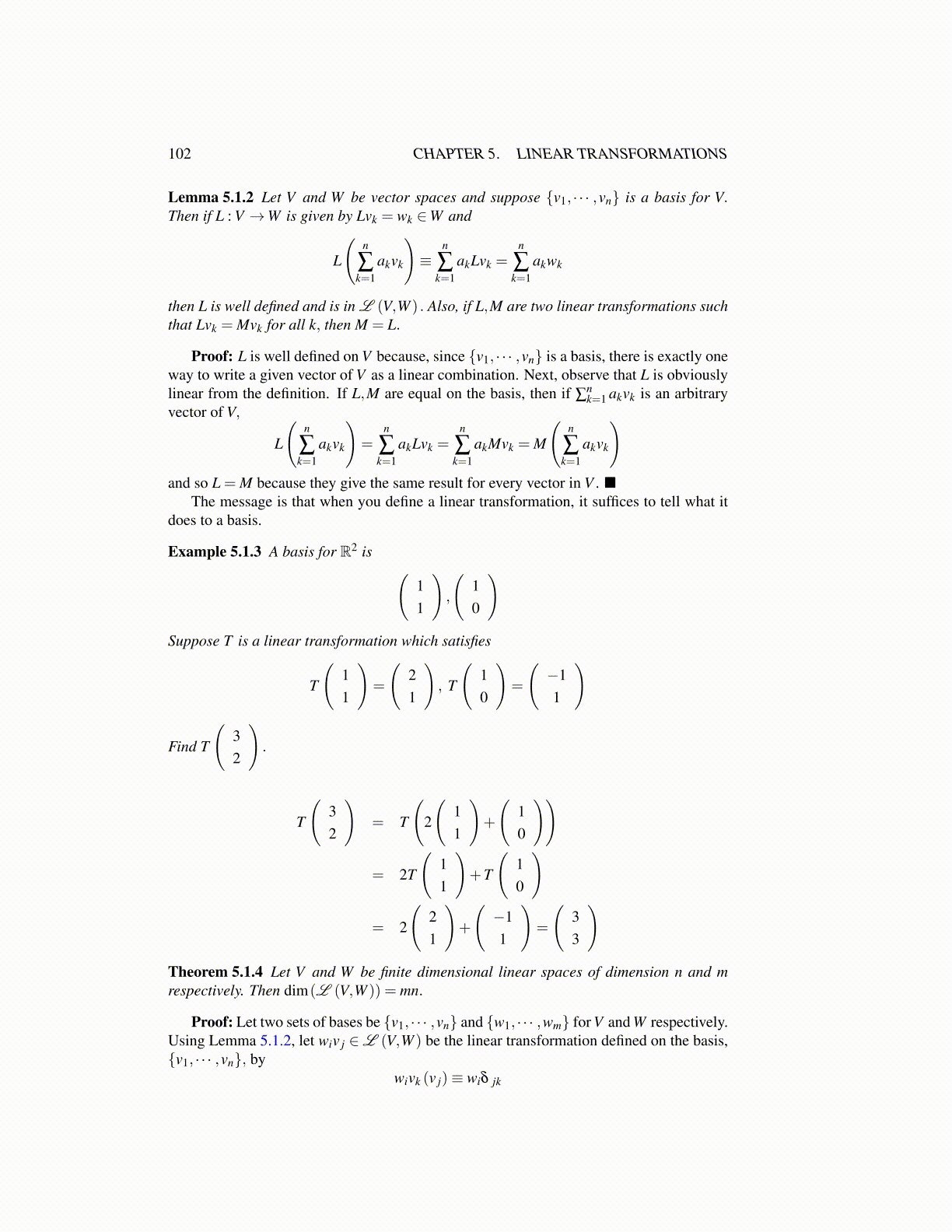
102 CHAPTER 5. LINEAR TRANSFORMATIONS
Lemma 5.1.2 Let V and W be vector spaces and suppose {v1, · · · ,vn} is a basis for V.Then if L : V →W is given by Lvk = wk ∈W and
L
(n
∑k=1
akvk
)≡
n
∑k=1
akLvk =n
∑k=1
akwk
then L is well defined and is in L (V,W ) . Also, if L,M are two linear transformations suchthat Lvk = Mvk for all k, then M = L.
Proof: L is well defined on V because, since {v1, · · · ,vn} is a basis, there is exactly oneway to write a given vector of V as a linear combination. Next, observe that L is obviouslylinear from the definition. If L,M are equal on the basis, then if ∑
nk=1 akvk is an arbitrary
vector of V,
L
(n
∑k=1
akvk
)=
n
∑k=1
akLvk =n
∑k=1
akMvk = M
(n
∑k=1
akvk
)and so L = M because they give the same result for every vector in V . ■
The message is that when you define a linear transformation, it suffices to tell what itdoes to a basis.
Example 5.1.3 A basis for R2 is (11
),
(10
)Suppose T is a linear transformation which satisfies
T
(11
)=
(21
), T
(10
)=
(−11
)
Find T
(32
).
T
(32
)= T
(2
(11
)+
(10
))
= 2T
(11
)+T
(10
)
= 2
(21
)+
(−11
)=
(33
)Theorem 5.1.4 Let V and W be finite dimensional linear spaces of dimension n and mrespectively. Then dim(L (V,W )) = mn.
Proof: Let two sets of bases be {v1, · · · ,vn} and {w1, · · · ,wm} for V and W respectively.Using Lemma 5.1.2, let wiv j ∈L (V,W ) be the linear transformation defined on the basis,{v1, · · · ,vn}, by
wivk (v j)≡ wiδ jk